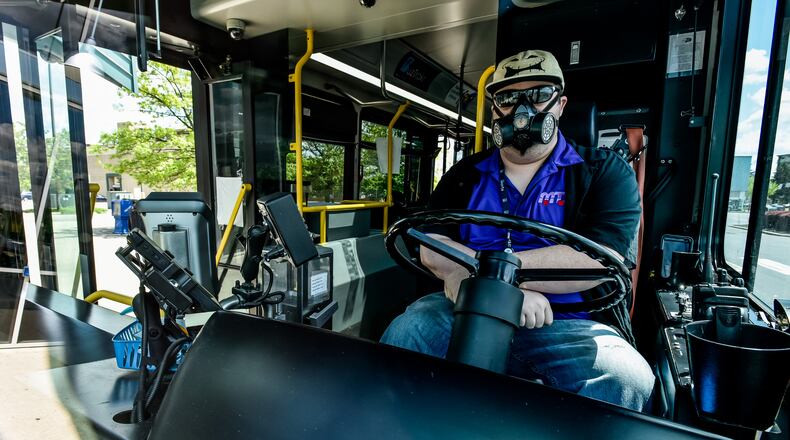BCRTA Executive Director Matt Dutkevicz said the ridership for the West Chester route “dropped off a cliff,” about 95% in all. The Oxford routes were strongly affected with a decrease of about 90%, largely because Miami University students were away from campus for long periods.
Ridership on the Middletown routes and the Job Connector only dropped by about 15%. Overall ridership dropped 64% from 620,320 in 2019 to 222,718 last year.
Brandy Jones, SORTA vice president for External Affairs, said the system had stopped all of its commuter bus routes at the height of the pandemic when everything was shut down but all routes are running now, with around 50% ridership.
Dutkevicz said his board plans to hire a consultant this year to help it figure out “how we can reallocate resources to make sure we’re making the most of what we have.”
“BCRTA is going to do a short-range planning study later this year to kind of look at all the routes that are on the road,” he said. “Part of our board’s objective is to see if we can’t get a little closer to employers and make it easier for people to use public transit to get to work.”
To keep riders safe, BCRTA instituted strict sanitizing policies, suspended fares and started back door bus boarding. In November, the board made the fare elimination on fixed routes permanent.
Jones said his organization only offered free rides for a couple weeks.
“The mayor asked us to stop doing that as far as the free fare, because there was an increase of people riding presumably because the fare was free,” Jones said. “They felt that was causing more of a hazard. So we installed the plexiglass barriers between the driver and the rider.”
BCRTA still charges a flat $5 rate for its Uber-like county-wide BGo service for areas not served by a fixed route. Dutkevicz said providing this service could become more problematic if Gov. Mike DeWine’s 90% public transit budget cut proposal stands.
The proposal drops funding from $63 million to $7.3 million annually for 2022 and 2023. Dan Tierney, the governor’s press secretary, said “the proposal is in line with historical levels and reflects increased federal funds available in addition to state funds.”
The state provided $367,445 to BCRTA in 2020 and $401,507 in 2019 but only $4,095 in 2018. BCRTA budgeted $5.3 million in expenses against $6.7 million in revenues for 2020. In addition to state funding, it received $2.2 million from the federal government, $1.9 million from Middletown and $1.8 million from Miami University. Revenue was only around $60,000 for the fixed-route fares.
Dan Bates, president and CEO of the Greater Hamilton Chamber of Commerce, said public transportation is crucial to economic development.
“I think the legislators and people in charge have to think of the future and I think the future includes public transportation...,” Bates said. “Southwest Ohio, the economic development is really impressive in spite of COVID and in spite of everything that’s happened in the past year. If we want to continue attracting talent, young talent, they’re not that big on having a car, it’s just not their thing.”
West Chester Twp. Community Development Director Aaron Wiegand agreed.
“We’re not always talking about people that can’t afford cars, with today’s younger people there’s definitely a lifestyle choice of not having those kind of things and utilizing public transportation...,” Wiegand said. “It’s a changing face of public transportation.”
About the Author

